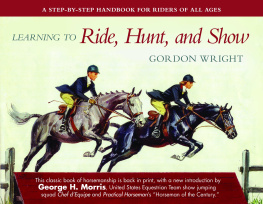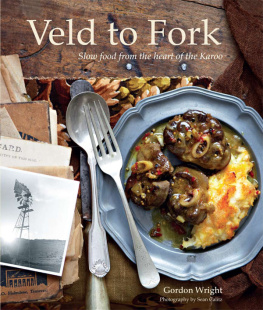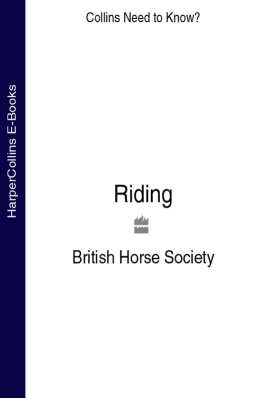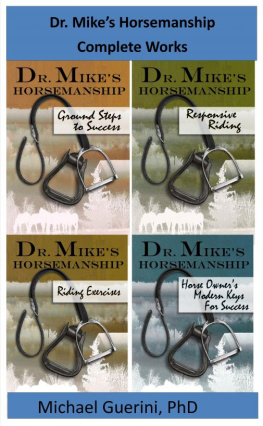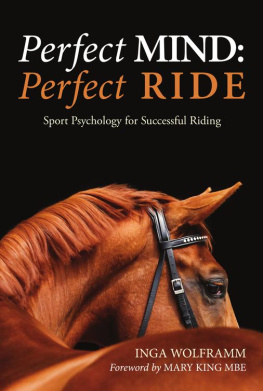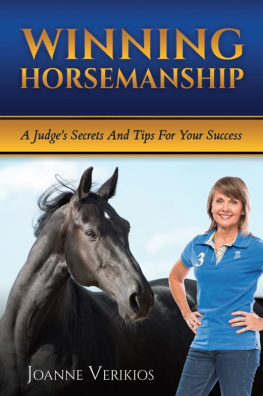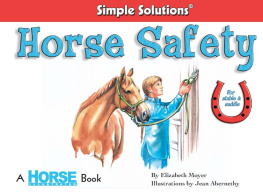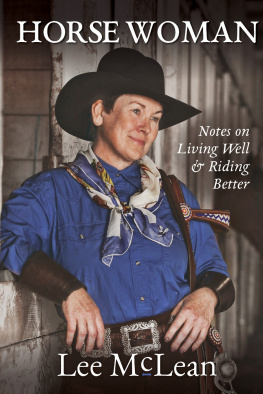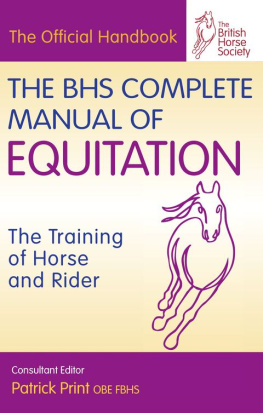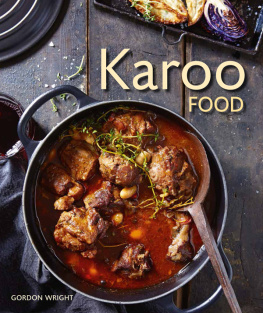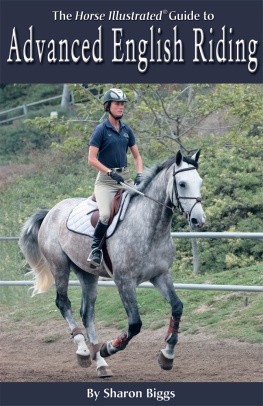Gordon Wright - Learning to Ride, Hunt, and Show
Here you can read online Gordon Wright - Learning to Ride, Hunt, and Show full text of the book (entire story) in english for free. Download pdf and epub, get meaning, cover and reviews about this ebook. year: 2009, publisher: Skyhorse, genre: Children. Description of the work, (preface) as well as reviews are available. Best literature library LitArk.com created for fans of good reading and offers a wide selection of genres:
Romance novel
Science fiction
Adventure
Detective
Science
History
Home and family
Prose
Art
Politics
Computer
Non-fiction
Religion
Business
Children
Humor
Choose a favorite category and find really read worthwhile books. Enjoy immersion in the world of imagination, feel the emotions of the characters or learn something new for yourself, make an fascinating discovery.
- Book:Learning to Ride, Hunt, and Show
- Author:
- Publisher:Skyhorse
- Genre:
- Year:2009
- Rating:3 / 5
- Favourites:Add to favourites
- Your mark:
- 60
- 1
- 2
- 3
- 4
- 5
Learning to Ride, Hunt, and Show: summary, description and annotation
We offer to read an annotation, description, summary or preface (depends on what the author of the book "Learning to Ride, Hunt, and Show" wrote himself). If you haven't found the necessary information about the book — write in the comments, we will try to find it.
Learning to Ride, Hunt, and Show — read online for free the complete book (whole text) full work
Below is the text of the book, divided by pages. System saving the place of the last page read, allows you to conveniently read the book "Learning to Ride, Hunt, and Show" online for free, without having to search again every time where you left off. Put a bookmark, and you can go to the page where you finished reading at any time.
Font size:
Interval:
Bookmark:
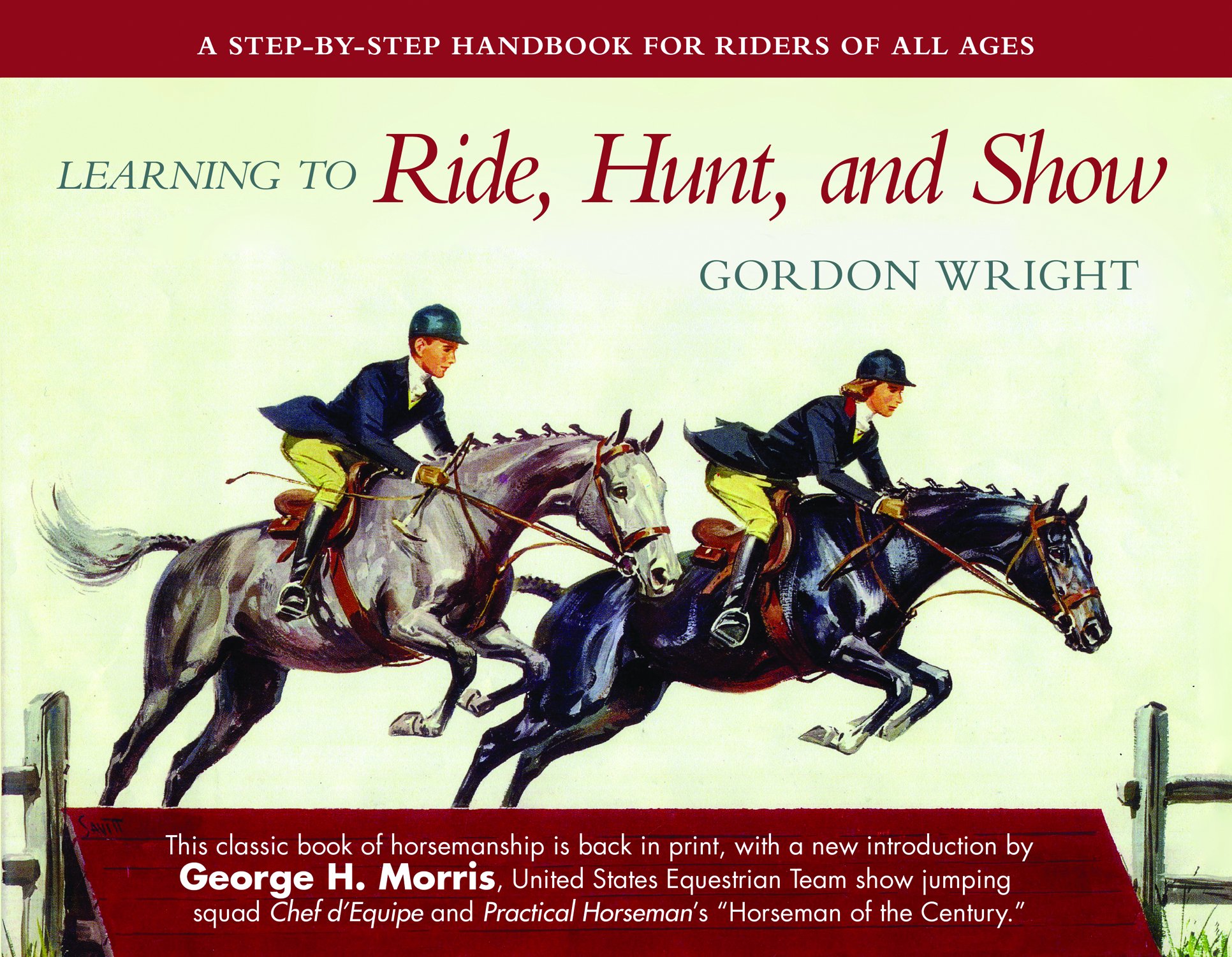
To be able to know and judge a horses conformation with any degree of skill or accuracy is beyond the knowledge and ability of the average rider. When you set out to buy a horse, you should put yourself in the hands of a dealer or professional horseman, in whom you have confidence, and be guided by his advice. A great majority of bad horse deals are not the result of dishonest horse trading, but the result of the riders having over-estimated his own riding ability so that he finds himself over-mounted; or the result of trying to purchase a single horse to fill many different needs and riding requirements.
Whether you are riding a horse that you have hired from a riding academy, or about to buy a horse of your own, the first thing to do is to get a reasonable estimate of your own riding ability. Good horses make good riders, because a good horse enables even a mediocre rider to look good; but bad riders ruin good horses. One of the surest ways to lose courage and security on a horse and start the development of bad hands is to find yourself over-mounted. When selecting a horse which you hope to enjoy for an hours pleasant hacking or for years of enjoyable hunting and jumping, dont over-estimate your own riding ability. Horses habits can be changed, but their dispositions remain the same. A bold horse is always a bold horse and even cutting down on his feedwhich is my idea of one of the cruelest ways to mistreat a horse that has a days work to dowont make him really quiet.
If you have to err, try to err on the side of getting something thats a little less horse than you think you can safely manage. The beginner, certainly, is safer with a horse he has to urge than with one he has to hold. Until a secure seat and reasonably steady hands have been developed, it is well to be mounted on horses that do not require too much control.
The second important consideration in choosing the horse you are to ride, or to own, is deciding what you really want in a horsea quiet hack, a horse that can hunt well and also show a little, or a horse that can be shown and jumped, but that probably will not be too well behaved in the company of the hunt field.
Every once in a while, of course, we do happen upon a combination of the horse that hunts and shows, hacks and jumps, with equal, even if not with outstanding, ability in each field. Since such a horse is the exception rather than the rule, make up your own mind what it is you want from your horse. The horse that hunts quietly and jumps well in company does not, as a rule, jump well alone, especially in the ring.
Many riding accidents would never have happened if people could control the false pride that makes them almost ashamed to ask for a quiet horse. But a good horseman can get anything he wants out of any horse, and I have never been able to figure out the illogic that makes poor riders think that they can control a high-spirited horse when, by their own admission, they cant even make the quiet horse move forward !
The good horseman is always mounted on a quiet horse, because whatever horse he is on seems quiet. Until you have reached the stage where your controls are able to function independently and automatically under any and all emergency conditions, always ask for a quiet horse. If youre really good enough to ride the other kind, youre good enough to get a good ride out of the tame variety.
And when you get ready to buy a horse, have confidence in the man from whom you are buying! Go to someone who has seen you ride and knows your riding ability. Tell him frankly what your price limit is and what you expect in the way of performance. If necessary, sacrifice age to temperament, disposition and looks to jumping skill. Out of the four or five things that you want a horse to be able to do for you, if you get a horse that does one of those things really well, consider that youve made a good deal.
Meanwhile, I think you will feel better about either hiring or buying a horse for your own riding enjoyment, if you know a little bit about a horses conformation, and how his good and bad points will affect your comfort and safety while in the saddle. Perfection is what we seek but seldom find. So remember that a good horse is one with many good points, some indifferent points, and no really bad points. Any number of good points in a horse cannot compensate for one really bad point. The body cannot be stronger than its weakest part.
Some conformation faults, while certainly not desirable, are not, on the other hand, too important. Others are important enough to render the horse either unfit or unsafe.
Another thing to bear in mind in checking your horses good and bad points is that handsome is as handsome does. It is true that a horse cannot be too deep through the chest, as we say on the conformation chart at the beginning of this chapter. But getting a good, deep-chested horse, with plenty of room for heart and lungs to work perfectly, is no good for the rider if the heart itself isnt there. There are chicken-hearted horses just as there are chicken-hearted people. Sometimes, this is just a result of poor training and putting a horse at obstacles that are too much for him. When this is the case, it is comparatively easy to restore the horses confidence and nerve. But there are some horses who simply do not have any heart, who have to be whipped and spurred over every fence, and who take advantage of every opportunity to quit or to run out. In a jumping horse, that kind of disposition is something that would completely nullify a dozen good conformation points.
A good horse for you is a horse that is physically and temperamentally suited to your riding needs. He is a horse who can perform well, stand up under the amount of work he is going to be asked to do, and so constructed, physically, that the rider has a pleasant, enjoyable time for the hours he is in the saddle.
Some of our top conformation hunters will not measure up to those requirements, but top conformation hunters are only expected to strip well when shown in hand and to perform creditably under the artificial conditions of the show ring. They are neither asked, nor expected, to do a days work in the hunt field, carry the timid or uncertain rider over fences, or perform smoothly and quietly enough for the young horsemanship rider to look well in horsemanship events.
After you have been scrupulously honest in your appraisal of your ownor your childsriding ability, and decided on the kind of riding which you most enjoyhacking, hunting, or showingthe following list of conformation faults, and the way in which they may be expected to affect your riding pleasure or your horses staying powers, may serve as a helpful check-list.
JUG-HEAD, or HAMMER-HEAD: An overly large or jug-head on a horse is certainly a blemish, but for the average rider, that, in itself, is not too important. The important thing is that a large head acts like a heavy weight at the end of a long lever and tends to make the horse heavy in the riders hands, to develop bad or heavy hands. Because such a horse is always hanging in the riders hands, this is a hard kind of horse for the horsemanship rider, especially, to look well on. Its also apt to be a clumsy horse, since a horses head and neck are his balancers, and this horse is overweighted and, therefore, out of balance.
EWE-NECK means that the horses neck is on him upside down. A ewe-necked horse is always a star-gazer. As a rule, a star-gazer, rushing into his fences with his head stuck up in the air, is not a safe jumper. A star-gazer will also tend to develop bad hands in a rider. The tendency is for the rider to attempt to lower the horses head carriage by lowering the hands, thereby breaking the line from the horses mouth to the riders elbow. And when the hands are carried high, as they must be on this type of horse, the effect for horsemanship classes, particularly, is not good. There is no way on earth to lower the carriage of a horses head when he is ewe-necked. To attempt to do so with tight martingales and other artificial aids is only to deprive the horse of the use of his head and neck to balance himself. A ewe-necked horse is, therefore, one to avoid if possible.
Font size:
Interval:
Bookmark:
Similar books «Learning to Ride, Hunt, and Show»
Look at similar books to Learning to Ride, Hunt, and Show. We have selected literature similar in name and meaning in the hope of providing readers with more options to find new, interesting, not yet read works.
Discussion, reviews of the book Learning to Ride, Hunt, and Show and just readers' own opinions. Leave your comments, write what you think about the work, its meaning or the main characters. Specify what exactly you liked and what you didn't like, and why you think so.

